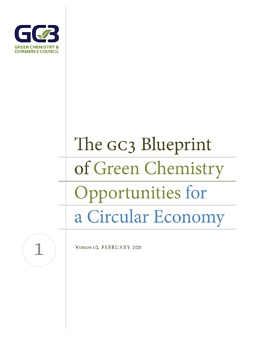The GC3 Blueprint of Green Chemistry Opportunities for a Circular Economy
Through research and stakeholder discussion, the GC3 Circular Economy Program aimed to highlight the synergies between green chemistry and the circular economy to enable and optimize the adoption of both.
Over the last decade, the concept of a “circular economy” has gained considerable momentum. A circular economy is regenerative and restorative by design. It is based on the principles of natural systems.
Retailers, brands, formulators, and chemical manufacturers are increasingly challenged to achieve multiple sustainability objectives, such as those outlined in the United Nations (UN) Sustainable Development Goals (SDGs), including carbon reduction and circularity. There are increasing policy, marketplace, and investor demands for more circular materials and products. A number of recent analyses and policy proposals for implementing circular economy approaches highlight the need for safer, more sustainable chemicals as a key prerequisite. GC3 has been at the forefront of these conversations, exploring the connections between green chemistry and the circular economy for the last several years. More recently, GC3 developed a report The GC3 Blueprint of Green Chemistry Opportunities for a Circular Economy (GC3 Blueprint) discussing how green chemistry can support and amplify the circular economy goals, as developed by the Ellen MacArthur Foundation, to help companies throughout the value chain harness the power of green chemistry to meet the growing need for a more sustainable economy.
The GC3 Blueprint framed discussions for a new forum in 2021, the GC3 Circular Economy discussion group. The group was dedicated to exploring the connection between green chemistry and the circular economy, met monthly to share best practices, challenges, and lessons learned from companies on their journey towards adopting green chemistry and a circular economy.

